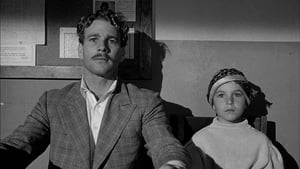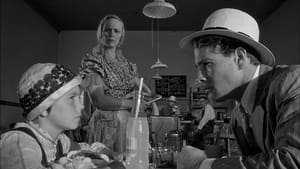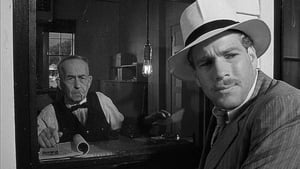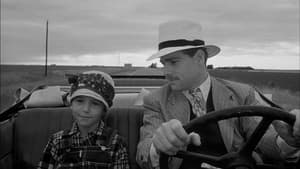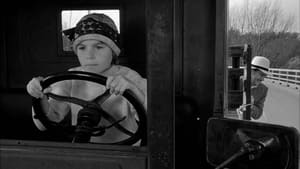Contact: info@alwanfilm.com
Video Sources 0 Views
- Watch trailer
- Paper Moon

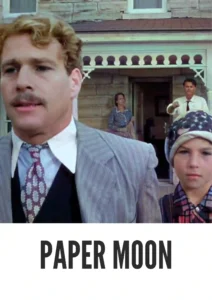
Synopsis
Table of Contents
ToggleReview: Paper Moon 1973 Colorized – A Heartfelt Journey Through Depression-Era America

Introduction
Paper Moon 1973 stands as a shining gem in the landscape of American cinema, capturing the essence of the Great Depression through its poignant storytelling and unforgettable performances. In this article, we will explore the significance of this classic film, its impact on audiences, and its lasting legacy in the realm of dramatic comedies. Through the lens of its early colored version, we will also examine how colorization has influenced the viewing experience of “Paper Moon” and its place in film history.
Check The Full Colorized Movies List
Check Our Colorized Movies Trailer Channel
Understanding Paper Moon 1973 Colorized: Director, Cast, and Genre
Directed by the acclaimed Peter Bogdanovich, Paper Moon 1973 showcases his remarkable ability to blend humor with heartache, crafting a film that resonates with audiences on multiple levels. The film features a stellar cast, including the dynamic duo of Ryan O’Neal and his daughter Tatum O’Neal, whose on-screen chemistry brings depth and authenticity to their roles. Set against the backdrop of the Great Depression, “Paper Moon” blends elements of drama and comedy, creating a genre-defying masterpiece that continues to captivate audiences.
Exploring the World of Paper Moon 1973 Colorized: Plot and Characters
Paper Moon 1973 tells the story of a young girl named Addie Loggins (Tatum O’Neal) and a con man named Moses Pray (Ryan O’Neal), who may or may not be her father. As they travel through the Midwest, scamming their way from town to town, a unique bond forms between them. Addie’s sharp wit and Moses’s street smarts make for an engaging dynamic that drives the film’s narrative. Along the way, they encounter a host of colorful characters, each adding to the richness of their journey and the depth of their relationship.
The Art of Film Colorization
Film colorization is a process that breathes new life into classic black and white films, transforming them with vibrant hues and enhancing their visual appeal. This digital technique involves carefully adding color to each frame, often using historical references and artistic interpretation to maintain the film’s original aesthetic. The result is a new version of the film that offers audiences a fresh perspective while preserving the essence of the original work.
Early Colored Films: A Brief History
The history of colored films dates back to the early days of cinema, with pioneers experimenting with various techniques to introduce color into their works. From hand-tinted frames to early Technicolor processes, filmmakers sought to enhance the visual storytelling of their films. The evolution of colorization has seen significant advancements, leading to the sophisticated digital techniques used today. These developments have allowed classic films like “Paper Moon” to be reimagined in color, offering a new dimension to their storytelling.
Paper Moon 1973 and Its Early Colored Version
The decision to release Paper Moon 1973 in a colorized format was met with both excitement and skepticism. While some purists preferred the original black and white version, others embraced the opportunity to experience the film in a new way. The colorized version of “Paper Moon” offers a fresh perspective on the story, highlighting the details of the Depression-era setting and adding a new layer of emotional resonance. This version allows viewers to see the film through a different lens, potentially deepening their appreciation for its artistry and storytelling.
The Debate Over Film Colorization
The debate over film colorization is a longstanding one, with passionate arguments on both sides. Proponents argue that colorization makes classic films more accessible to modern audiences, who may be less inclined to watch black and white movies. They believe that adding color can enhance the viewing experience and breathe new life into timeless stories. Critics, however, contend that colorization can compromise the artistic integrity of the original work, altering the director’s vision and diminishing the historical significance of black and white cinematography. This ongoing debate underscores the complexities of preserving and modernizing classic films.
Examining Paper Moon 1973 as an Early Colored Film
Colorization can both enhance and detract from the viewing experience of a classic film like Paper Moon 1973. The vibrant hues can bring out the details of the Depression-era setting, making the dust and grit of the Midwest more tangible. However, some may argue that the stark contrasts of black and white better capture the film’s melancholic undertones and the characters’ emotional struggles. Ultimately, the impact of colorization on “Paper Moon” depends on individual viewer preferences, with both versions offering unique insights into the film’s narrative and aesthetic.
Influence and Legacy: Paper Moon 1973 Colorizeds Impact on Cinema
Paper Moon 1973 has left an indelible mark on the world of cinema, inspiring filmmakers and captivating audiences with its blend of humor and heart. The film’s portrayal of a father-daughter relationship amidst the hardships of the Great Depression resonates with viewers of all ages, transcending generational boundaries. Its success paved the way for future collaborations between Peter Bogdanovich and the O’Neals, solidifying their place in cinematic history. The film’s legacy is also evident in its influence on subsequent road movies and dramedies, which continue to draw inspiration from its masterful storytelling.
Director’s Cinematic Legacy: Beyond Paper Moon 1973 Colorized
Peter Bogdanovich’s influence extends far beyond Paper Moon 1973, with a diverse body of work that has shaped the landscape of American cinema. From “The Last Picture Show” to “What’s Up, Doc?”, Bogdanovich’s films are celebrated for their wit, charm, and emotional depth. His ability to capture the nuances of human relationships and his keen eye for detail have earned him a place among the great directors of his generation. Bogdanovich’s legacy continues to inspire filmmakers, cementing his status as a visionary storyteller.
Themes Explored in Paper Moon 1973 Colorized
Paper Moon 1973 delves into a myriad of themes, from the resilience of the human spirit to the complexities of familial bonds. The film explores the concept of found family, highlighting the unlikely bond between Addie and Moses as they navigate the challenges of Depression-era America. Themes of survival, trust, and redemption are woven throughout the narrative, inviting viewers to reflect on the characters’ journeys and their own experiences. The film’s exploration of these timeless themes contributes to its enduring appeal and emotional resonance.
Reception and Controversy Surrounding Paper Moon 1973 Colorized
Upon its release, Paper Moon 1973 received widespread acclaim from critics and audiences alike. Tatum O’Neal’s performance earned her an Academy Award for Best Supporting Actress, making her the youngest winner in Oscar history. The film’s blend of humor and heart, coupled with its authentic portrayal of the Great Depression, resonated with viewers and cemented its status as a classic. The decision to release a colorized version, however, sparked controversy among purists who argued that it compromised the film’s artistic integrity. Despite this debate, the colorized version has introduced “Paper Moon” to a new generation of viewers, ensuring its continued relevance.
Where to Watch Paper Moon 1973 Colorized Online
For those eager to experience the timeless magic of “Paper Moon” (1973), the film is readily available on popular streaming platforms such as Netflix, Amazon Prime, and Hulu. Whether you choose to watch it in its original black and white format or the early colored version, “Paper Moon” (1973) promises to transport you to the heart of Depression-era America, where the resilience of the human spirit shines through in the face of adversity.
FAQs About Paper Moon 1973 Colorized
Q: Is Paper Moon 1973 based on a true story? A: “Paper Moon” (1973) is based on the novel “Addie Pray” by Joe David Brown, which, while fictional, draws inspiration from the author’s observations and experiences during the Great Depression.
Q: Who are the main actors in “Paper Moon” (1973)? A: The film stars Ryan O’Neal as Moses Pray and Tatum O’Neal as Addie Loggins. Their father-daughter chemistry brings authenticity and depth to their performances, making their characters’ journey all the more compelling.
Q: What awards did Paper Moon 1973 win? A: “Paper Moon” (1973) received several accolades, most notably an Academy Award for Best Supporting Actress, awarded to Tatum O’Neal. Her remarkable performance at such a young age left a lasting impression on audiences and critics alike.
Q: Why was Paper Moon 1973 released in a colorized format? A: The decision to release “Paper Moon” (1973) in color was made to introduce the film to a new generation of viewers and enhance its visual appeal for modern audiences. While the choice to colorize the film sparked debate among purists, it ultimately allowed “Paper Moon” (1973) to reach a wider audience and ensure its continued relevance in the annals of cinematic history.
Q: How does the colorized version of Paper Moon 1973 differ from the original? A: The colorized version of “Paper Moon” (1973) adds vibrant hues to the original black and white film, highlighting details of the Depression-era setting and enhancing the visual storytelling. However, some argue that the stark contrasts of the black and white version better capture the film’s melancholic undertones and emotional depth.
Q: What themes are explored in “Paper Moon” (1973)? A: “Paper Moon” (1973) delves into themes of resilience, trust, survival, and the complexities of familial bonds. The film explores the concept of found family, the unlikely bond between Addie and Moses, and their journey through Depression-era America.
Q: Where can I watch Paper Moon 1973 online? A: “Paper Moon” (1973) is available for streaming on popular platforms such as Netflix, Amazon Prime, and Hulu. Both the original black and white version and the colorized version can be found, offering viewers the choice to experience the film in different formats.
Q: What impact did “Paper Moon” (1973) have on cinema? A: “Paper Moon” (1973) left a significant mark on the world of cinema, inspiring future filmmakers and solidifying its place as a classic. Its blend of humor and heart, authentic portrayal of the Great Depression, and exploration of timeless themes continue to resonate with audiences, ensuring its lasting legacy.
Q: Who directed “Paper Moon” (1973)? A: “Paper Moon” (1973) was directed by Peter Bogdanovich, a renowned filmmaker known for his ability to blend humor with heartache and capture the nuances of human relationships.
Q: What is the significance of Tatum O’Neal’s performance in “Paper Moon” (1973)? A: Tatum O’Neal’s performance in “Paper Moon” (1973) is significant for several reasons. At the age of 10, she became the youngest winner of an Academy Award, earning the Best Supporting Actress accolade. Her portrayal of Addie Loggins is widely regarded as one of the most remarkable child performances in cinematic history.
Conclusion
“Paper Moon” (1973) stands as a testament to the power of storytelling, capturing the essence of the Great Depression through its heartfelt narrative and unforgettable performances. Whether viewed in its original black and white format or the early colored version, the film continues to resonate with audiences, offering a timeless tale of resilience, trust, and the complexities of familial bonds.
As we reflect on the enduring legacy of “Paper Moon” (1973), let us celebrate its status as a cinematic classic that continues to inspire and captivate viewers. The film’s exploration of timeless themes, coupled with its masterful blend of humor and heart, ensures its place in the annals of film history.
Whether you’re revisiting “Paper Moon” (1973) or experiencing it for the first time, take a moment to appreciate the artistry and storytelling that make it a beloved classic. In the journey of Addie and Moses, you’ll find a treasure trove of wisdom and wonder that transcends time, reminding us of the enduring power of cinema to touch our hearts and souls.

